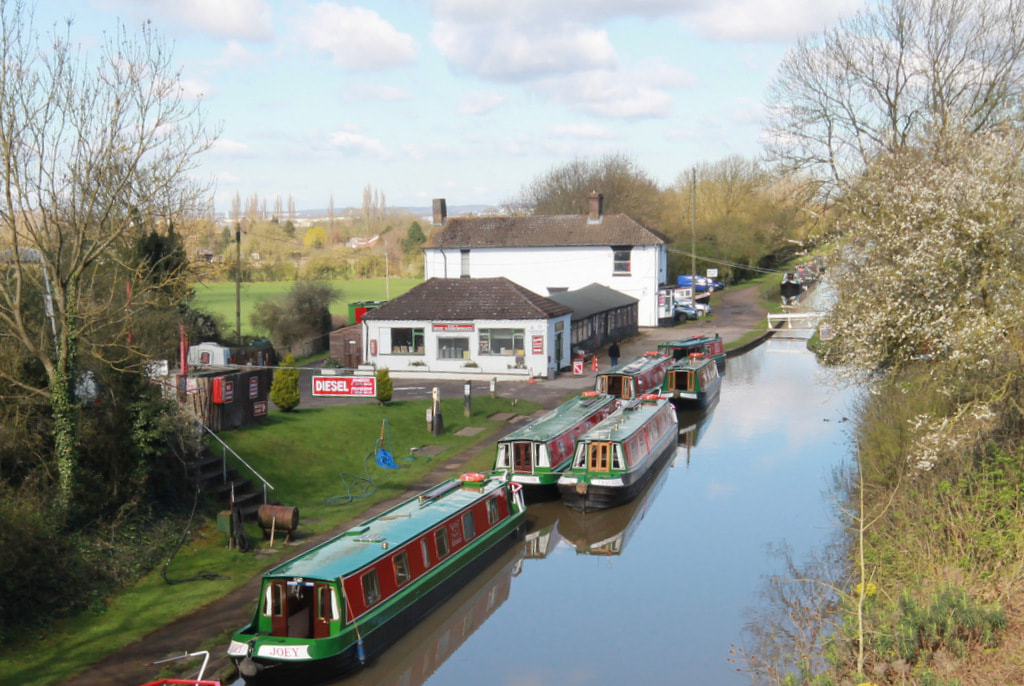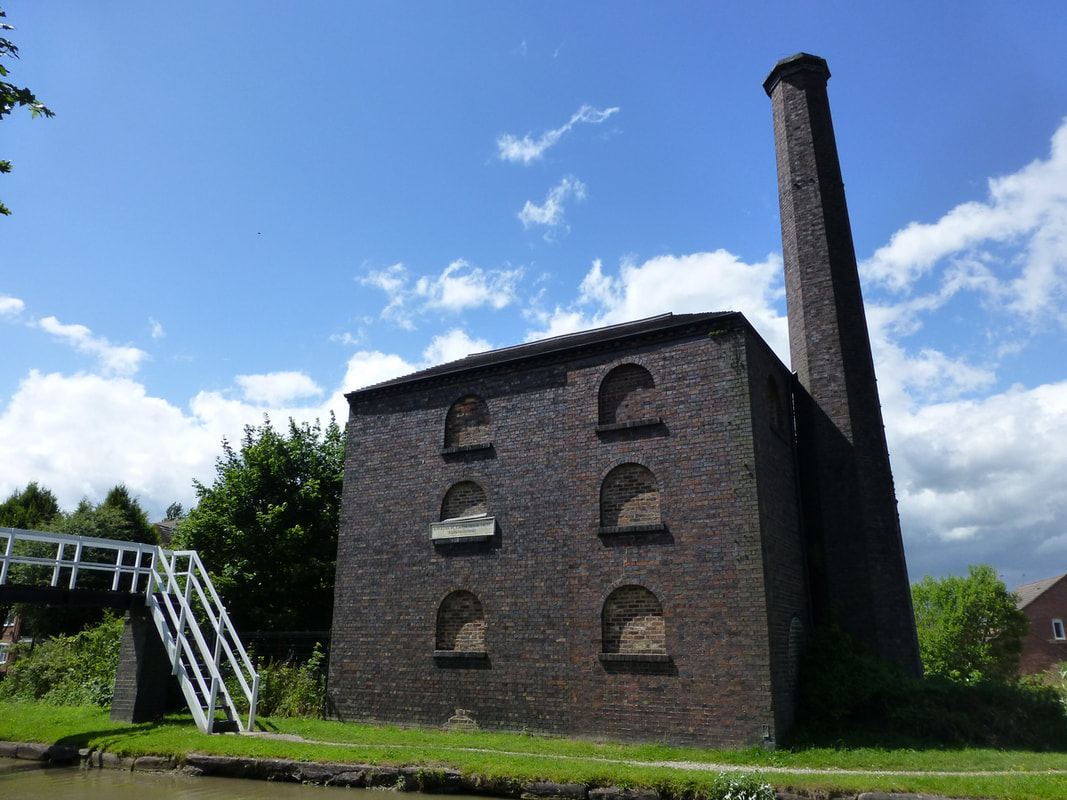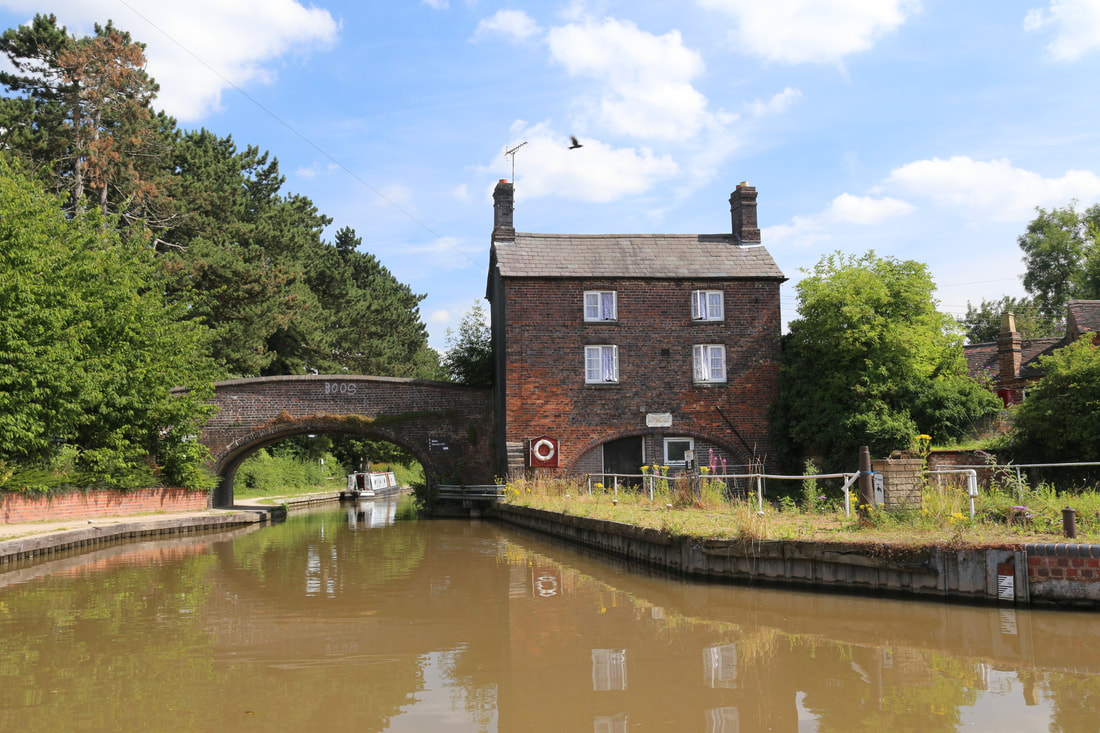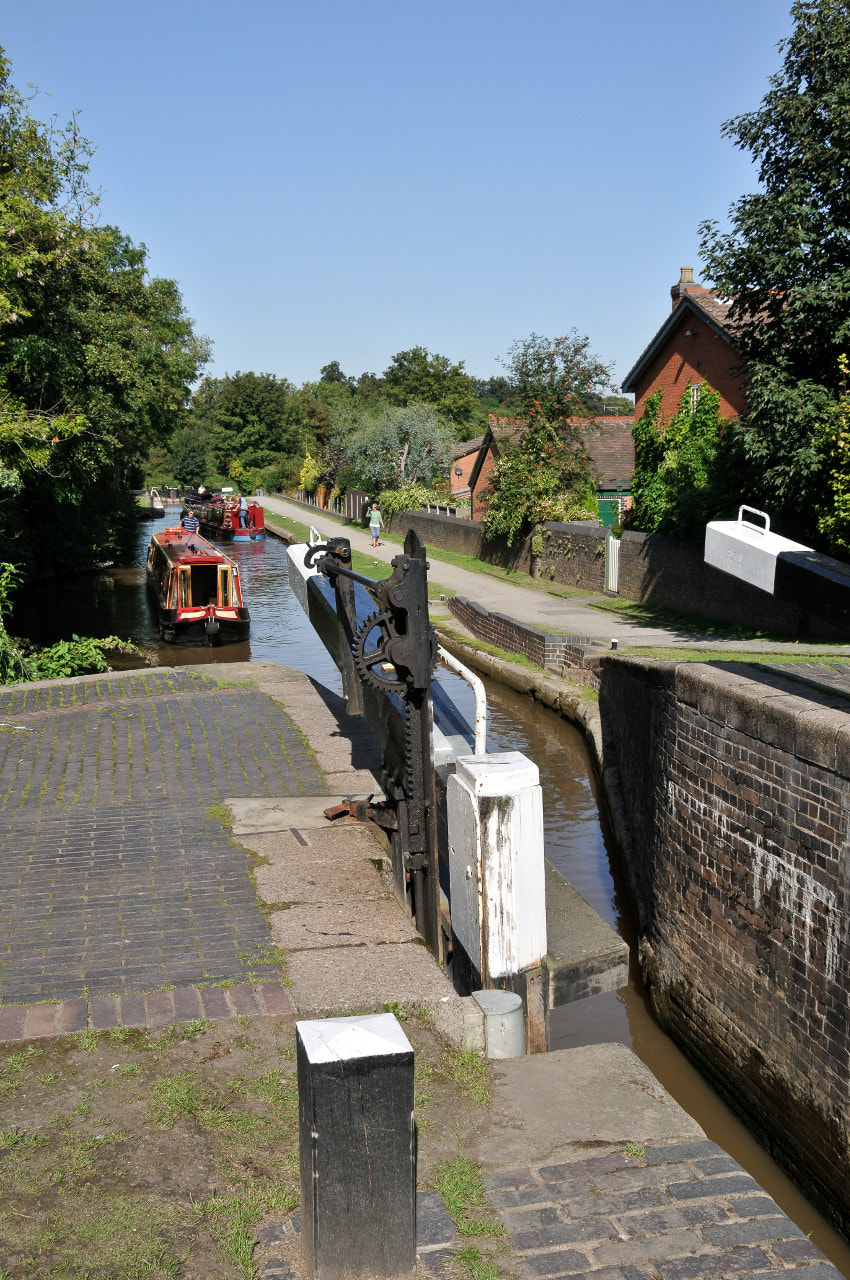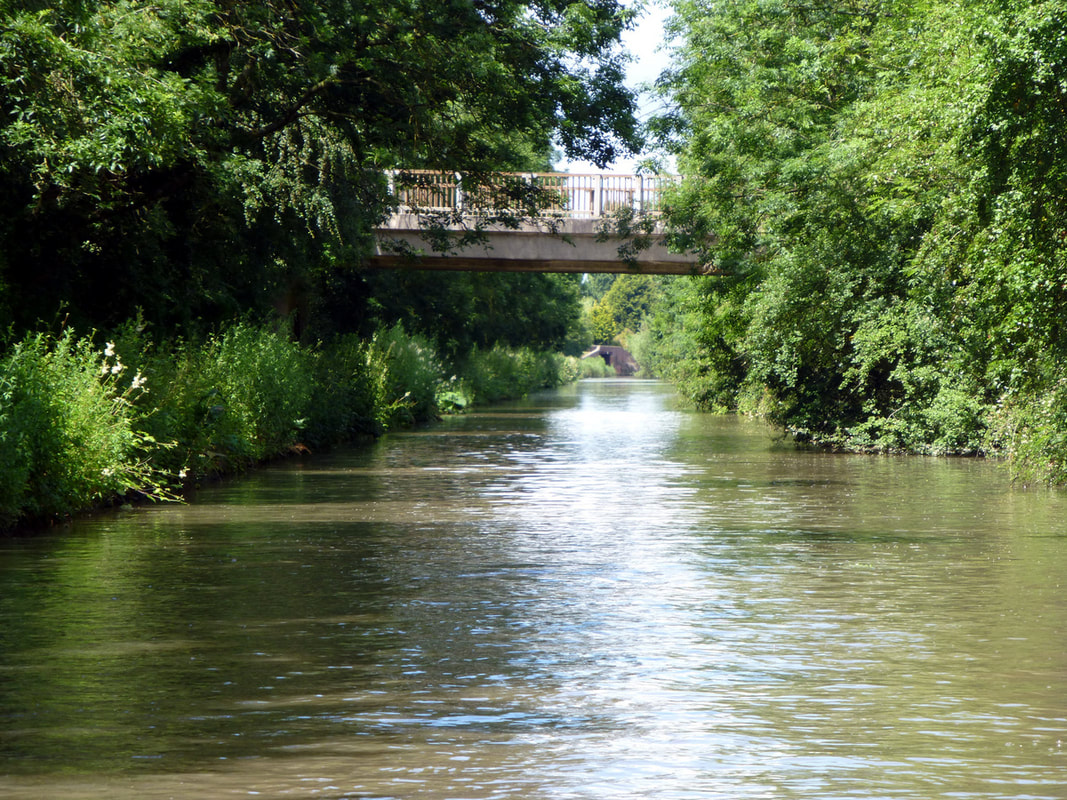|
2 Week Route
|
182 Miles
|
108 Locks
|
78 Hours
|
|
The Oxford Canal was engineered by James Brindley and built as a “contour canal” which means that the line follows the contours of land with a minimum of earthworks. This created a very tortuous route and the northern section of the canal was modernised in the 1830’s, almost halving the distance from Coventry to Braunston, striding across the countryside with a series of impressive arrow straight cuttings and embankments interspersed with winding sections of the original canal.
The first part of your journey is along mostly “new” canal (only about 180 years old!) and after passing through some impressive cuttings and high above open farmland you reach Ansty in about 1 ½ hours. After Ansty you approach the outskirts of Coventry, but the canal still manages to retain a rural character for much of the one and a half hour run into Hawkesbury Junction (also known as Sutton Stop). Hawkesbury Junction was designated a conservation area in 1976 and is something of an industrial archaeology haven despite much development around it. There is an impressive cast iron bridge, an engine house that once housed a Newcomen Beam Engine built in 1725, a colourful pub (the Greyhound), and a 6 inch, deep stop lock. Just down the road is another pub, the Boat. The Oxford canal once continued beyond here to its terminus basin at Longford but go right round the junction (a 180 degree right turn to test the helmsman’s skill) and continue north along the Coventry Canal; the left turn takes you on a very urban journey to the Coventry Canal’s terminus close to the centre of Coventry. Heading towards Marston Junction, you pass through a long, wooded cutting before skirting Bedworth and passing the historic Charity Dock. Soon you come to Marston Junction where the Ashby Canal branches off to your right. This is about one hour from Hawkesbury and about three and a half hours from the boatyard. This area is rich in minerals and if you look carefully you can see many old wharves which provided much of the traffic for the Coventry Canal in its commercial heyday. Nowadays the land has been restored – but keep an eye out for “Judd’s Mount”, a former spoil tip that is something of a local landmark. The Anchor Inn at Hartshill has an extensive children’s play area and good food. The nearby maintenance yard has been attractively restored and the trip from here to Atherstone is very pleasant. At Atherstone the canal descends a pleasant flight of 11 locks. The top five are quite close together, the bottom half of the flight is more spread out as the canal heads out into the countryside in the direction of Tamworth, which is about 7 miles away. The next place of note is the village of Polesworth which has good moorings, and just beyond is Pooley Hall and an old colliery loading basin. The colliery closed in the early 1960s and the adjacent land, formerly a spoil tip, is now pleasant nature reserve. Just before you reach Alvecote, where there is a marina and popular pub, there are moorings on the left hand side for the site of Alvecote Priory. The canal now enters the outskirts of Tamworth, dropping through two locks at Glascote before crossing the River Thame on a substantial brick aqueduct to reach Fazeley Junction. Here the Birmingham & Fazeley heads off towards Birmingham on your left, but you bear right towards Fradley Junction. By the time it reached this point, the original promoters of the Coventry Canal where in what might be delicately termed “some financial distress”. Hopwas is another good stopping point, with three pubs and a post office and shop. The canal runs along a wooded hillside at this point with the river close by in the bottom of the valley. The channel blasted out of rock and is quite shallow, so you can only move slowly, but it’s so pretty you won’t mind! After the village of Whittington the canal passes Huddlesford Junction,where the Wyrley & Essington Canal branched off. This route, which passed through Lichfield to Brownhills in the West Midlands was closed in the 1950’s but an active canal society is working towards its restoration. The canal passes through open countryside now Fradley Junction, a famous spot on the inland waterways as a major junction between the north and south routes of canal engineer James Brindley’s “Grand Cross” of canals connecting the country. Here you must make a sharp left turn on the Trent & Mersey Canal, and climb three locks here onto the long level pound towards Rugeley. There are good moorings at Handsacre on the outskirts of Rugeley with a pub and fish & chip shop close to Bridge 58. After the next railway bridge there is a large factory on the left hand side where Armitage Shanks porcelain is made – the first sign you are heading into the area of England known as the potteries, and the raison d’etre for this canal. There used to be a tunnel at Armitage, but this was opened out in 1971, and now it is partly covered by a road bridge. The canal opens out again after the tunnel and Spode House can be seen on your left. Rugeley has good moorings close to the centre of town. Since Fradley, the River Trent is never far away in the valley to your right, and after Rugeley the canal finally plucks up the courage to cross it, making a sharp right turn before striding confidently above the swirling river on another hefty brick aqueduct. With the river now to your left the valley narrows with good views of Cannock Chase on your left and the canal starts to climb again at Colwich Lock. There are good moorings just below the next lock (Haywood Lock) for visiting Shugborough Hall and the ancient pack horse bridge. At Great Haywood a graceful brick bridge carries the Trent & Mersey Canal’s towingpath over the junction with the Staffordshire & Worcestershire Canal. There are many great country houses in this area, and above Hoo Mill lock the canal skirts the grounds of Ingestre Hall and passes close to Hopton Heath (the site of a battle in 1643 during the first English Civil War and Sandon Hall. You are now three 3 locks and six miles from the pretty canal town of Stone with good moorings and facilities, and soon after Stone the canal climbs a flight of five locks at Meaford (pronounced Mefford). Above the flight there are moorings at Bridge 104 and it is only a short walk from there to the Wedgewood Museum. This also makes a good overnight mooring spot before Stoke on Trent. Above Trentham Lock the rural character of the rural character of the canal surrenders to the outskirts of Stoke-on-Trent where a flight of five locks lifts up to Etruria. There is a museum here dedicated to the history of pottery industry whose factories once lined the banks of the canals in this area. Leaving the Trent & Mersey at Etruria the Caldon Canal climbs immediately up a pair of staircase locks and makes its way north-easterly out of Stoke-on-Trent. There are several lift bridges on this section and one lock before the short flight at Stockton Brook which brings onto the summit level the canal. At Hazelhurst a short, lock free branch to Leek turns off to the right, and then crosses the main line on an aqueduct, reaching the outskirts of Leek via a short tunnel. You can walk from here into town or take the footpath which follows the canal “feeder” (a water supply channel) to Rudyard Lake. Back on the mainline of the canal, three locks at Hazelhurst lower you onto a two mile pound which takes to Cheddleton. There are very attractive moorings here and all the facilities of a rural town, plus the Cheddleton Flint Mill and the Churnet Valley Railway, a heritage steam railway. There are two locks at Cheddleton, and below these the canal and the steam railway share the valley past Consall Forge and on to Froghall, the canals terminus. At Oak Meadow Lock the canal uses the channel of the River Churnet for nearly a mile and half as far as Consall Forge. Here, in a steeply wooded valley the canal ducks under the railway, passing a pub (The Black Lion) and through a lock back into man made channel. Froghall Tunnel is just before the end of the canal, where there are large terminal basins, a legacy of the canals industrial past when this canal was busy with cargoes of raw materials for Stoke on Trent, but the surrounding area has been thoroughly reclaimed by nature now. |


